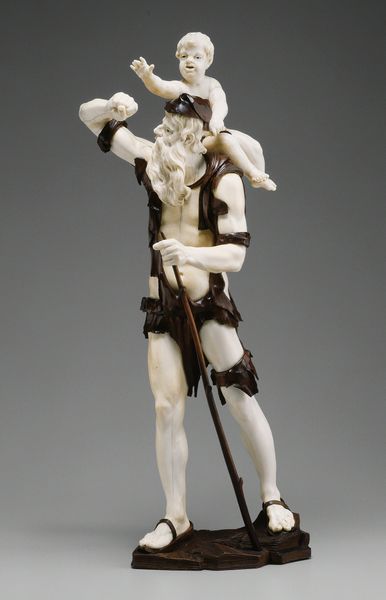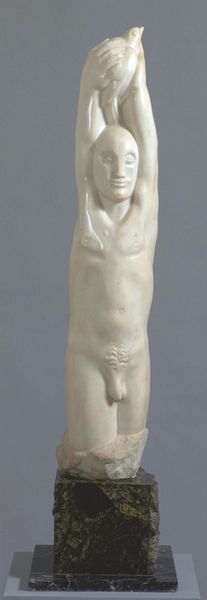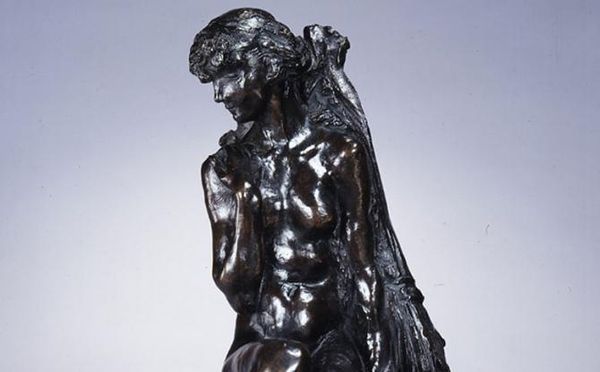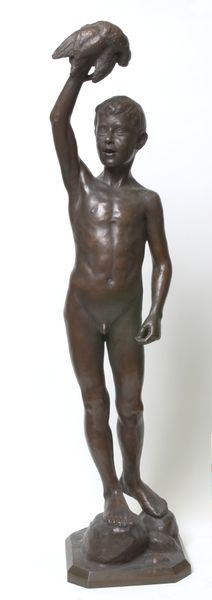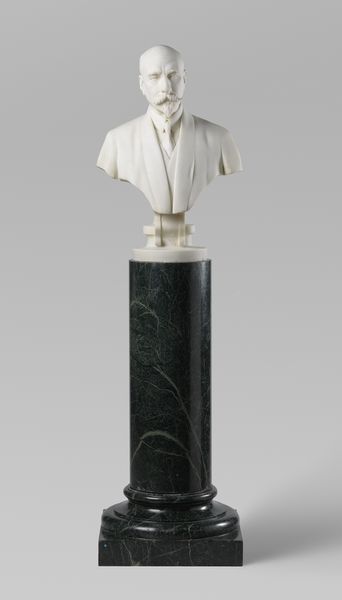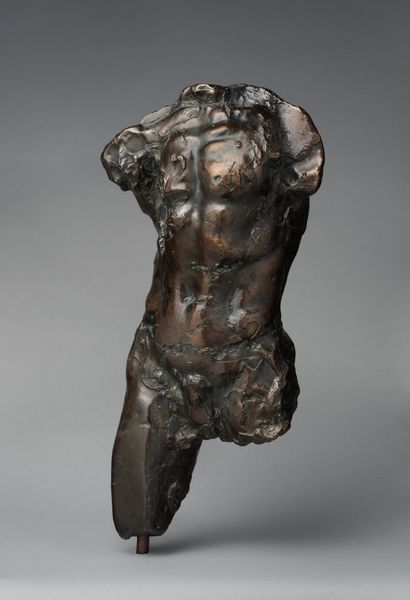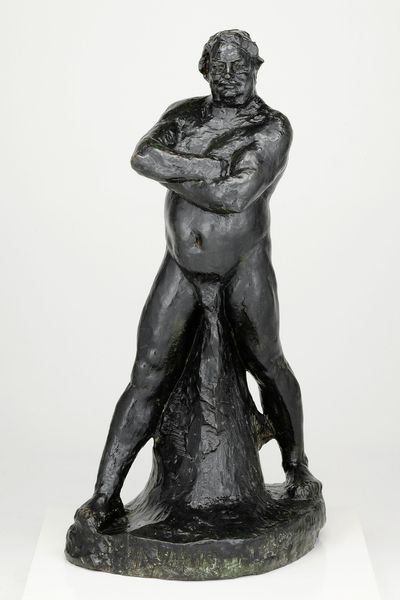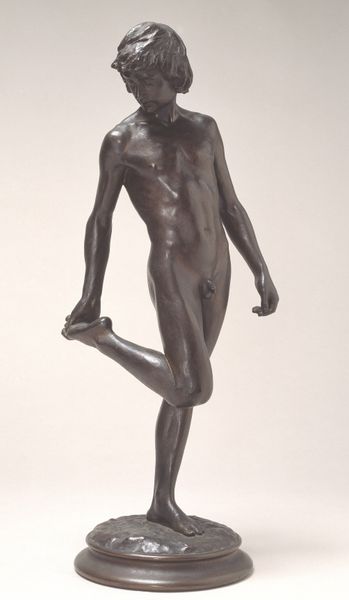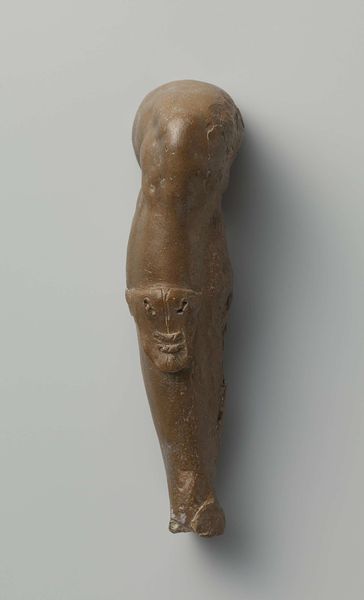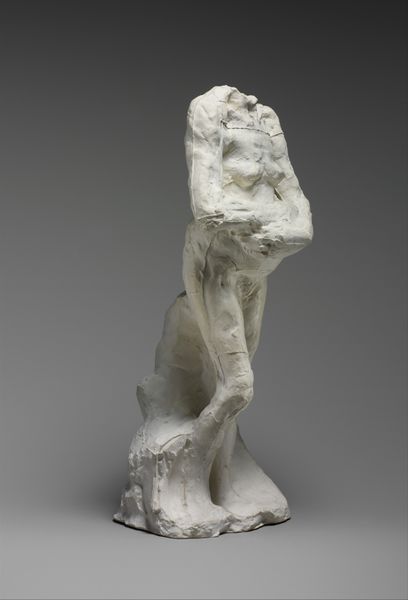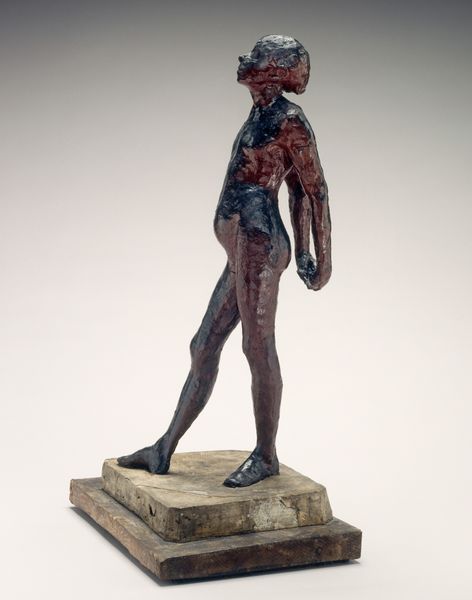
Dimensions: object: 584 x 229 x 178 mm
Copyright: CC-BY-NC-ND 4.0 DEED, Photo: Tate
Editor: Here we have Arthur G. Walker’s "Christ at the Whipping Post." It's a striking sculpture, really highlighting Christ's vulnerability. What stands out to you about the form of this piece? Curator: The contrast between the polished marble of Christ's figure and the dark, roughly hewn base is quite compelling. Notice how the artist uses the verticality of the column to emphasize the figure's suffering, drawing our eye upwards. Editor: So, the structure itself contributes to the emotional impact? Curator: Precisely. The composition focuses our attention on the texture of the skin, the tension in the muscles, and the semiotic weight of the chains binding his wrists. The artist masterfully uses form to evoke empathy. Editor: That's a perspective I hadn't fully considered. Thank you! Curator: My pleasure. The power of art lies in its formal language.
Comments
tate 6 months ago
⋮
http://www.tate.org.uk/art/artworks/walker-christ-at-the-whipping-post-n04101
Join the conversation
Join millions of artists and users on Artera today and experience the ultimate creative platform.
tate 6 months ago
⋮
Walker produced numerous sculptures on religious themes both in Britain and the USA and was a prolific maker of war memorials. His best known work is the memorial to Florence Nightingale in London’s Waterloo Place. The subject here – the Flagellation of Christ – stems from the Bible and was common in Western European art. The use of chryselephantine (ivory and stone) might have seemed old-fashioned, being a popular technique in the 1800s especially among Art Nouveau artists. The image of Christ’s suffering may well have had contemporary resonances. Gallery label, September 2016
